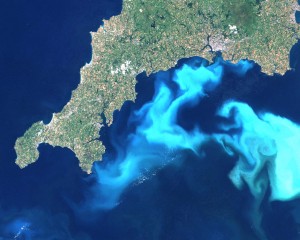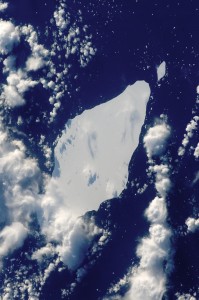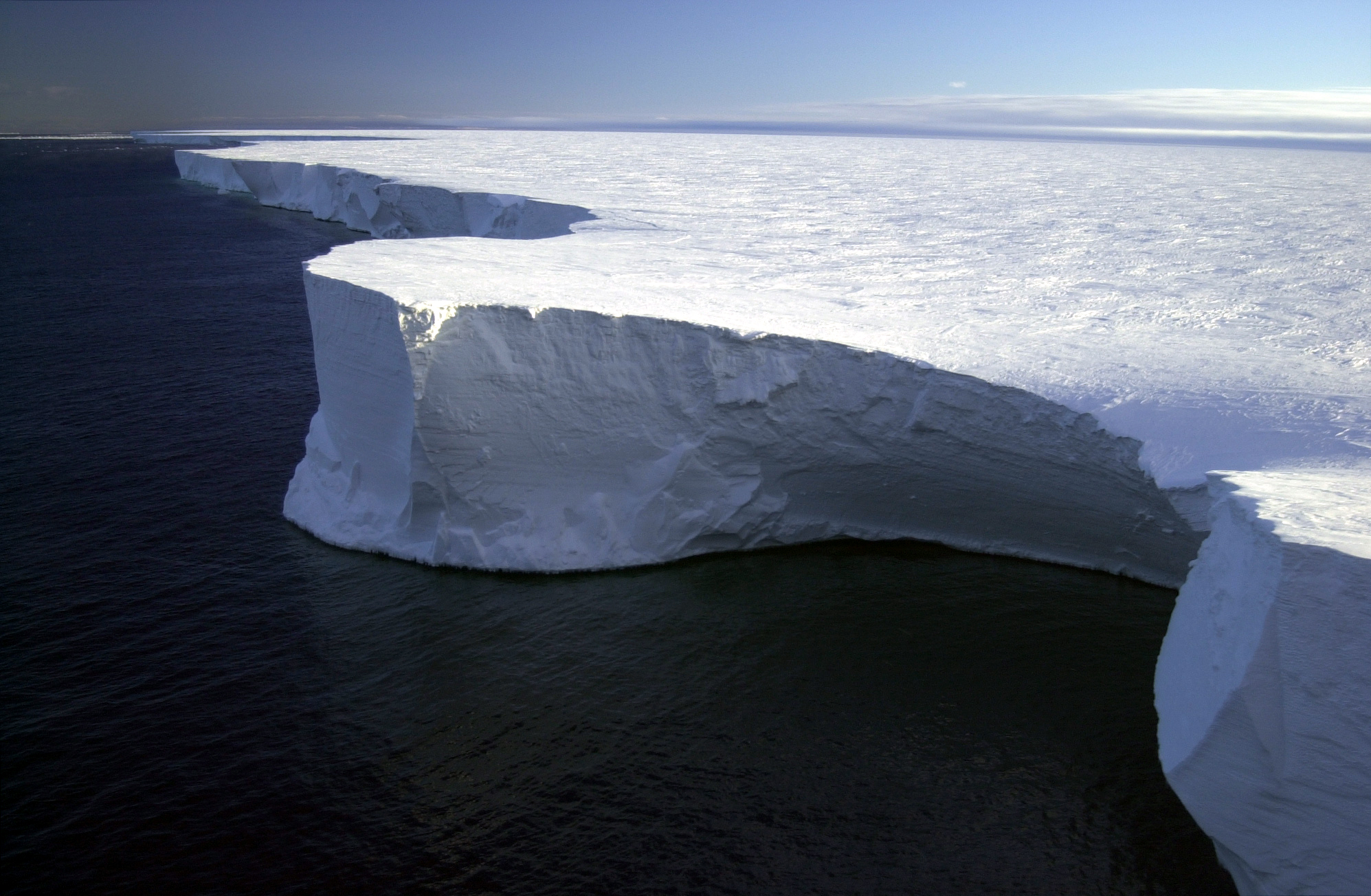Sunlight streams through the water as microscopic plants cover the ocean’s blue depths with a thin film of vibrant green. Some ride the ocean currents, completely at the mercy of the waves, while others propel themselves with long tail like structures called flagellum. The world’s oceans teem with phytoplankton, these tiny single celled plants, but they do not thrive equally well in all oceanic areas. Phytoplankton growth is limited by the concentrations of minerals and nutrients. When enough resources are present, phytoplankton growth explodes and forms a bloom, a drastic increase in population size. Blooms are visible to the naked eye, coloring patches of water with green chlorophyll, a molecule that allows plants to convert carbon dioxide into sugars and oxygen by using energy from the sun.

Icebergs melt as they travel through oceans, slowly releasing the nutrients trapped within the ice to create the ideal conditions for phytoplankton blooms. A new study from Sheffield University discovered that the blooms trailing behind giant icebergs—defined as over 11 miles across—last longer and extend significantly farther than those from average sized icebergs. These blooms participate substantially in carbon sequestration: the capture and storage of atmospheric carbon. When the phytoplankton die, their bodies sink down to the sea floor, returning carbon to the earth.
Grant Bigg, a professor of earth systems science at Sheffield University, led the study. His team of researchers examined photos of the Southern Ocean, measuring changes in ocean color to estimate the concentration of chlorophyll near giant icebergs. Since chlorophyll is a biomolecule within phytoplankton, the spread of high concentrations of it correlates with large blooms. As anticipated, the researchers discovered that phytoplankton flourished near icebergs, but they were surprised by the size of the blooms. The chlorophyll trails were massive, measuring three to four times the length of the giant icebergs on average. Some icebergs even had plumes as long as 10 times their length. To put that in context, previous studies recorded phytoplankton trails that were approximately equal to the length of the icebergs. These studies only monitored small icebergs, however.
Previous studies monitoring chlorophyll did not look at giant icebergs because they are difficult to survey. Since giant icebergs have the same material composition as smaller icebergs, they were expected to affect phytoplankton blooms similarly. But larger amounts of fresh water melt off giant icebergs, increasing mineral concentrations and phytoplankton activity. The effects last longer, even as the iceberg travels away, because the nutrients are consumed slowly. Discovering these differences between giant and average-sized icebergs changes our perspective on carbon sequestration, since smaller icebergs do not contribute significantly to the storage of carbon.

Giant icebergs are incredibly rare, with only a couple dozen floating in the Southern Ocean at a time. Smaller icebergs are formed by calving events, the splitting of glacier ice at the edge of an ice shelf. But giant icebergs form by a different mechanism; they break off when something integral to the ice sheet is disturbed. Giant icebergs can only arise from large ice sheets, exclusively located around Antarctica. Northern oceans do not have these huge sheets of ice, so giant icebergs are not found in the northern hemisphere. Even in the Southern Ocean, their numbers are limited. “The loss of really large ones happens really rarely. Some regions might not get a large one released for ten years,” Bigg said.
This study uncovered an important carbon sink, a location that absorbs more carbon from the atmosphere than it releases. Terrestrial organisms consume approximately half of the earth’s carbon, but the remaining amounts are absorbed into the ocean. Approximately half of the carbon absorbed into the ocean is taken up through the dissolution of carbon dioxide into cold seawater while the remaining portion is absorbed by phytoplankton and seaweed growth. The Southern Ocean alone takes up approximately 10-15% of the carbon absorbed annually. Increased carbon absorption by phytoplankton near giant icebergs likely accounts for 2-3% of the global carbon sink. While this amount may seem insignificant, Bigg explained that this process is crucial to remove carbon from the climate system. “It’s a relatively small amount, but everything adds to the total,” Bigg said. Additionally, this mechanism acts as a negative feedback loop for global warming. With the onset of climate change, more giant icebergs are expected to form, but their presence could help to slow down the increase of atmospheric carbon.

